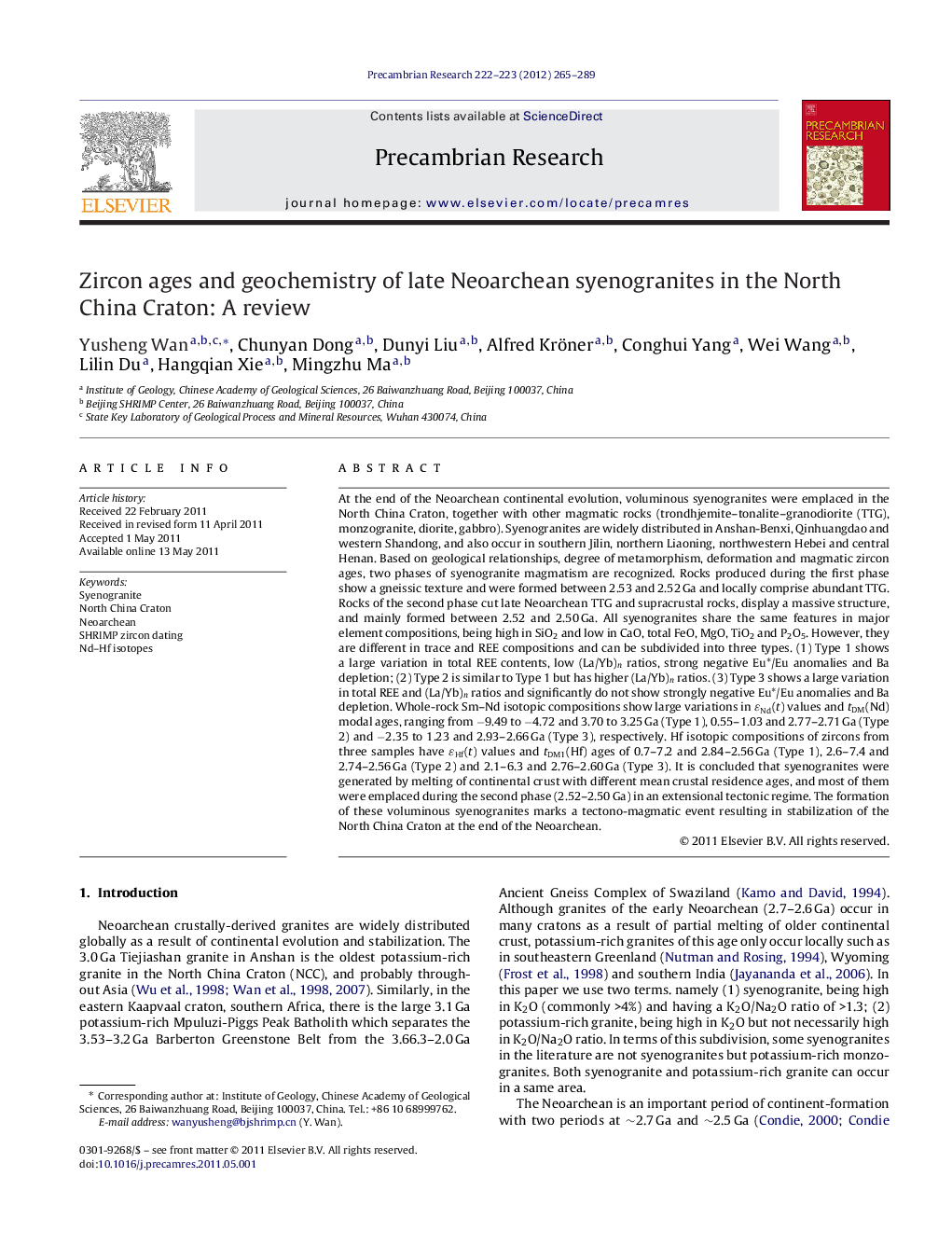| Article ID | Journal | Published Year | Pages | File Type |
|---|---|---|---|---|
| 4723453 | Precambrian Research | 2012 | 25 Pages |
At the end of the Neoarchean continental evolution, voluminous syenogranites were emplaced in the North China Craton, together with other magmatic rocks (trondhjemite–tonalite–granodiorite (TTG), monzogranite, diorite, gabbro). Syenogranites are widely distributed in Anshan-Benxi, Qinhuangdao and western Shandong, and also occur in southern Jilin, northern Liaoning, northwestern Hebei and central Henan. Based on geological relationships, degree of metamorphism, deformation and magmatic zircon ages, two phases of syenogranite magmatism are recognized. Rocks produced during the first phase show a gneissic texture and were formed between 2.53 and 2.52 Ga and locally comprise abundant TTG. Rocks of the second phase cut late Neoarchean TTG and supracrustal rocks, display a massive structure, and mainly formed between 2.52 and 2.50 Ga. All syenogranites share the same features in major element compositions, being high in SiO2 and low in CaO, total FeO, MgO, TiO2 and P2O5. However, they are different in trace and REE compositions and can be subdivided into three types. (1) Type 1 shows a large variation in total REE contents, low (La/Yb)n ratios, strong negative Eu*/Eu anomalies and Ba depletion; (2) Type 2 is similar to Type 1 but has higher (La/Yb)n ratios. (3) Type 3 shows a large variation in total REE and (La/Yb)n ratios and significantly do not show strongly negative Eu*/Eu anomalies and Ba depletion. Whole-rock Sm–Nd isotopic compositions show large variations in ɛNd(t) values and tDM(Nd) modal ages, ranging from −9.49 to −4.72 and 3.70 to 3.25 Ga (Type 1), 0.55–1.03 and 2.77–2.71 Ga (Type 2) and −2.35 to 1.23 and 2.93–2.66 Ga (Type 3), respectively. Hf isotopic compositions of zircons from three samples have ɛHf(t) values and tDM1(Hf) ages of 0.7–7.2 and 2.84–2.56 Ga (Type 1), 2.6–7.4 and 2.74–2.56 Ga (Type 2) and 2.1–6.3 and 2.76–2.60 Ga (Type 3). It is concluded that syenogranites were generated by melting of continental crust with different mean crustal residence ages, and most of them were emplaced during the second phase (2.52–2.50 Ga) in an extensional tectonic regime. The formation of these voluminous syenogranites marks a tectono-magmatic event resulting in stabilization of the North China Craton at the end of the Neoarchean.
Graphical abstract.Figure optionsDownload full-size imageDownload as PowerPoint slideHighlights► Late Neoarchean syenogranites are widely distributed in the North China Craton. ► Two phases (2.53–2.52 Ga and 2.52–2.50 Ga) of syenogranite magmatism are recognized. ► There are three types of syenogranites in terms of element and isotope compositions. ► They mark a tectono-magmatic event resulting in stabilization of the craton.
